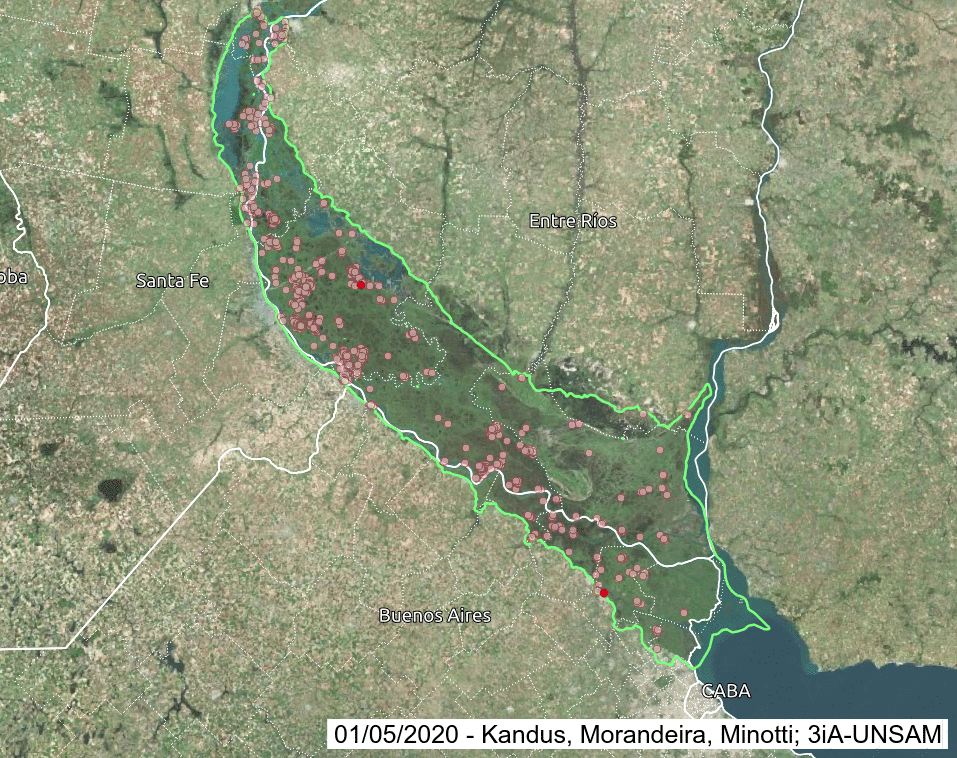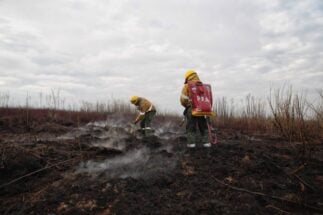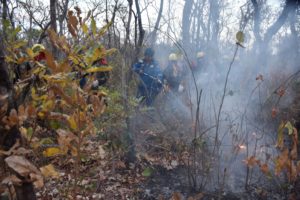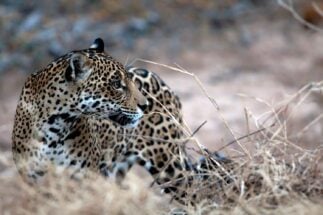Since the beginning of the year, more than 18,000 fires have destroyed a large part of Argentina’s Paraná Delta, a wetland home to unique biodiversity that provides oxygen and drinking water to millions of people and greatly mitigates the effects of climate change.
1000km2
of the Paraná Delta's unique wetland has already been destroyed by this year's fires
The fires, the most widespread and prolonged at least since 2008, have already devastated some 1,000 square kilometres of territory as they spread across a system of interwoven islands, lagoons and streams some 320km long and up to 70 km wide. The blazes have hit the region’s flora, fauna, soil, water and air.
The combination of the worst drought in 10 years and river runoff not seen in more than 60 created fertile ground for the fires to spread. Livestock farmers in the region, burning the winter’s dry vegetation and enabling new pastures to germinate.
Historically, successive Argentine governments have overlooked the territory, encouraging the free entry of cattle ranchers displaced by the spread of soy cultivation in the central, lowland Pampas region that was sparked by a 2005 price boom.
However, the delta is under pressure from more than cattle ranching. Industrial fishing, real estate development, poaching, drought, and a general lack of fire management training have contributed to one of the worst environmental disasters in the area in recent memory.
As well as the destruction of nature, smoke from the fires has caused several large coastal cities such as Rosario, San Lorenzo and San Nicolás to suffer days with air pollution up to five times higher than permitted, according to Rosario’s National University.
Paraná Delta fires: a unique ecosystem at risk
Fires in the Paraná Delta started at the beginning of the year and peaked in the first two weeks of August, a period during which some 7,000 fires were recorded. The figure equates to almost a third of the annual total, according to weekly reports by the Antonio Scasso Museum of Natural Sciences in San Nicolás.
In the first eight months of the year, at least 900 square kilometres have already been burned, according to Greenpeace estimates. This area is equivalent to nearly five times the city of Buenos Aires. Other organisations, like Naturalistas Santafesinos, say the damage is even greater and that at least 1,000 square kilometres have been burned.
The legislative debate is the only good thing to come out of this catastrophe
Animal deaths, the loss of natural habitats, soil impoverishment, water and air pollution, and emissions increases are some of the devastating impacts that alter the balance of the more than wetlands more that 700 plant and animal species.
According to Graciela Klekailo, a plant ecology specialist at the National University of Rosario, there are differences in the way the blazes affect the varied fauna and flora.
“During fires, birds are less affected than amphibians and reptiles, which move less quickly or do not manage to escape,” she said, adding that even birds suffer impacts because the places where they nest, reproduce and find food are destroyed.
Livestock and fires
Cattle ranching is a principal economic activity on the islands that the fires are at least partially attributable to. Livestock rearing had been around for years in the Paraná Delta but jumped in scale as farmers elsewhere sought to capitalise on the on the lucrative soy trade.
“By 2007 there was a peak in the number of cattle in the wetlands, reaching 1.5 million, due to the movement of the agricultural frontier in the mainland and thanks to several years of stable river flow,” explained Ernesto Massa, an agricultural engineer at the National Institute of Agricultural Technology (Inta).

That process began to change around ten years ago. More frequent floods associated with greater climate variability caused and low prices for cattle brought about a slump. Today, only 30 to 40% percent of the 1.5 million head of cattle on the islands remain, according to Massa.
Massa says that no one person or industry can be held responsible for this year’s environmental disaster: “There is a bit of everything, it is a territory of enormous complexity and under its management there can be legitimate for fire, which the area’s indigenous people use.”
Massa also says that this year’s exceptional circumstances – the drought and the accumulation of highly flammable biomass – created a powerful natural cocktail for the fires to spread.
“River wetlands are ecosystems with a very high biomass productivity, the combination of low river and low temperatures does not help, we are in a period of strong environmental abnormality”.
The solution, according to Massa, is to avoid simplifications when it comes to fires. He urges the Argentine government to stop just “fighting” and insists that it recognise a problem in which multiple factors and actors – farmers, fishermen, tourists and hunters – are all involved.
“We have to learn to live together with fire since it is impossible to extinguish it,” Massa says, pointing out that humans have an innate cultural need for fire that must coexist with the ecosystem:
“We have to work on prevention and not just suppression, which is very expensive. It’s not enough to make a reserve, the state has to invest and train itself.”
Social pressure
The images of rising columns of smoke that seen almost daily from the coast of the provinces of Santa Fe, Entre Rios and Buenos Aires that the delta straddles generated a strong social reaction, forcing local and national governments to intervene. Efforts to tackle the blazes involved light aircraft, helicopters and fire brigades.
Social pressure also accelerated debates on eight different proposed wetlands bills in both chambers of the national congress. Such legislation would recognise the wetlands as unique ecosystems and would improve planning for their use. Similar laws exist for forests and glaciers.
“I think the legislative debate is the only good thing to come out of this catastrophe,” says Victoria Dunda, a lawyer and member of the El Paraná No Se Toca group that has fought to put the issue on the public agenda.
“Even if we are already late in the case of the Delta, it is important to open the discussion since there are many other wetlands in Argentina that can still be preserved.”








